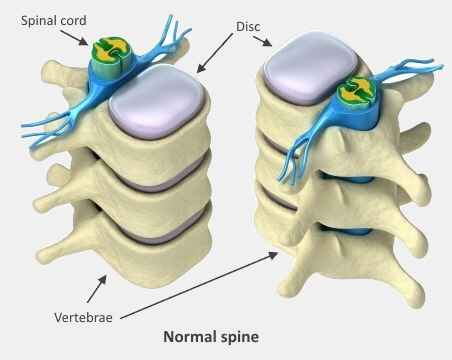Mamae ā-tuarā o raro Low back pain
Understanding your back
Your spine is made up of bones called vertebrae. There are discs between the vertebrae, which act as shock absorbers and allow your spine to be flexible.
Strong bands of tissue called ligaments support your spine, and muscles make it move. Joints between the vertebrae, called facet joints, guide the way it moves.
Your spine protects your spinal cord, which contains nerves to and from your brain. Nerves from your spinal cord come out from between the vertebrae and continue to other parts of your body.

The medical name for your lower back is your lumbosacral spine.
Diagnosing low back pain
Your healthcare provider will ask you questions and examine you to help diagnose the cause of your low back pain.
If you have non-specific back pain, you are unlikely to need any tests such as x-rays or scans in the first few weeks.
If your pain does not get better as expected or your healthcare provider is concerned about a specific cause of the pain, you may need x-rays or scans such as MRI. Or you might need to see a specialist.
Treating low back pain
Most low back pain gets better with self care but sometimes you will need help from a health professional.
You may want help from a chiropractor, osteopath, or physiotherapist to help you recover from your back pain. All give similar treatment and can be effective — choose the one that best suits you.
You can expect whichever health professional you choose to thoroughly assess you, advise you on how you can help yourself, and give you an individual treatment plan. This plan will include exercises and manual therapy.
Structured exercise programme
Your exercise programme might include:
- flexion (bending forward) and extension (bending backward)
- strengthening
- aerobic exercise (like walking, swimming or cycling)
- general fitness
- a combination of these.
It might include supervised exercise sessions or exercises you can do at home.
Manual therapy
Manual therapy includes spinal mobilisation and spinal manipulation.
Manipulation involves moving a joint in your spine more than it would normally move. Mobilisation involves moving a joint in your spine within the range it would normally move. Once they have examined you and talked about the options, the therapist may use one or both techniques.
Manual therapy may also include massage, techniques to reduce tension and checking how well the joints in your spine are working.
If treatment is not working
If you do not get significantly better after 5 to 6 treatments, talk to your therapist or healthcare provider about what other options you have.
If your pain lasts for more than 3 months, the HealthInfo website has information on chronic (persistent) pain.
Preventing low back pain
Low back pain is very common and if you have had it once, it may happen again. Unfortunately, there is no magic bullet to totally prevent it. But there are 2 simple measures that can help to reduce the rate and impact of any future back pain.
Keep active
It does not matter what exercise you do. Just do something you enjoy. Research shows that doing strengthening exercises specifically for your spine and abdomen does not prevent back pain, but regular general exercise and activity can.
Do 10 modified push ups once or twice a day
- Lie face-down on the floor with your arms bent and your hands under your shoulders.
- Push up with your arms and arch your back, leaving your hips on the floor.
- Relax your stomach muscles and let your back sag for a second.
- Slowly return to the floor.
Repeat this exercise 10 times. Do it every day.
Other measures to prevent back pain
- Sleep well.
- Manage your stress and anxiety levels.
- Do not smoke because nicotine decreases blood flow to your back. Back pain is more common, and recovery is slower in smokers.
- Aim to achieve and maintain a healthy weight.
- Avoid slouching when sitting for long periods of time. If sitting with a correct posture helped to get rid of your back pain last time, it makes sense to make sitting correctly a lifetime habit.
- If your previous low back pain was caused by bending forward, make sure you arch backwards every now and then whenever you are in a situation where you're bending a lot, for example, gardening.
- Use correct lifting techniques.
Clinical review
This content was written by HealthInfo clinical advisers. It has been adapted for Health Information and Services.